Introduction
Comprehensive guidance on improving your overhead smash in pickleball. It emphasizes the importance of developing proper technique, positioning, footwork, timing, strength, ball toss, aiming for the sweet spot, visual focus, and more. By focusing on these aspects and incorporating the suggested tips and drills into your training, you can enhance your overall performance and achieve a more powerful and effective overhead smash in pickleball.
1. Develop Proper Technique


To improve your overhead smash in pickleball, it’s essential to focus on developing the correct form and mechanics. Pay attention to the following aspects:
Grip
Ensure that you have a solid grip on the paddle. The most common grip used for the overhead smash is the Continental grip, where the base knuckle of your index finger is placed on the edge of the paddle. This grip allows for better control and maneuverability.
Compact Backswing
Start your overhead smash with a compact backswing. Bring the paddle back behind your shoulder while keeping your elbow close to your body. This helps generate power and control during the swing.
Explosive Upward Swing
As you initiate the swing, explode upward with your paddle. Use your legs, core, and upper body to generate power. Transfer your weight from your back foot to your front foot and fully extend your arm to maximize the force behind the shot. This upward swing allows you to generate both power and trajectory for an effective overhead smash.
By focusing on these aspects of proper technique, you can improve the execution and efficiency of your overhead smash in pickleball. Remember to practice these elements consistently to develop muscle memory and improve your overall performance on the court.
2. Positioning
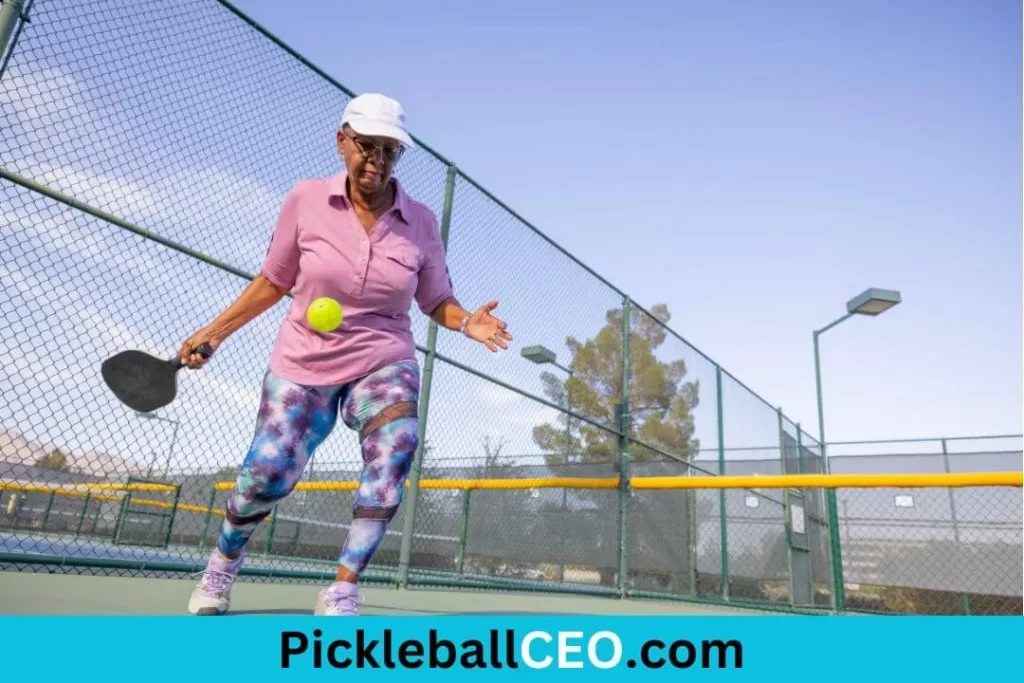

Positioning plays a crucial role in setting up for a successful overhead smash. By anticipating the shot and moving quickly, you can ensure you are in the ideal position to execute the smash effectively. Here’s a closer look at the key elements of positioning:
Anticipate the Shot:
Anticipating the shot means predicting where the ball is likely to be hit by your opponent. Watch your opponent’s body positioning, paddle angle, and shot selection to get a sense of where they might aim the ball. This anticipation will allow you to start moving towards the ideal position early.
Move Quickly:
Once you anticipate the shot, react swiftly to get into position. The goal is to reach a spot slightly behind the ball, as this will give you better control and power during the overhead smash. Use quick footwork to cover ground efficiently and arrive at the desired location.
Ideal Position:
The ideal position for an overhead smash is slightly behind the ball, typically with your body aligned with your hitting shoulder. This positioning allows you to generate more power by utilizing your body’s kinetic energy while maintaining balance and control.
Adjust for Height and Spin:
Consider the height and spin of the incoming ball when positioning yourself for the overhead smash. For higher shots, you may need to position yourself closer to the net to avoid hitting the ball out. If the ball has significant topspin or backspin, adjust your positioning to ensure you make solid contact.
Stay Balanced:
As you move into position, focus on maintaining balance. Keep your knees slightly bent, center of gravity low, and weight evenly distributed to remain stable during the overhead smash. This will enable you to transfer power effectively and react to unexpected shots.
Remember, practice is key to developing a sense of positioning for the overhead smash. With experience, you’ll become better at reading your opponent’s shots and instinctively positioning yourself in the most advantageous spot on the court.
3. Footwork
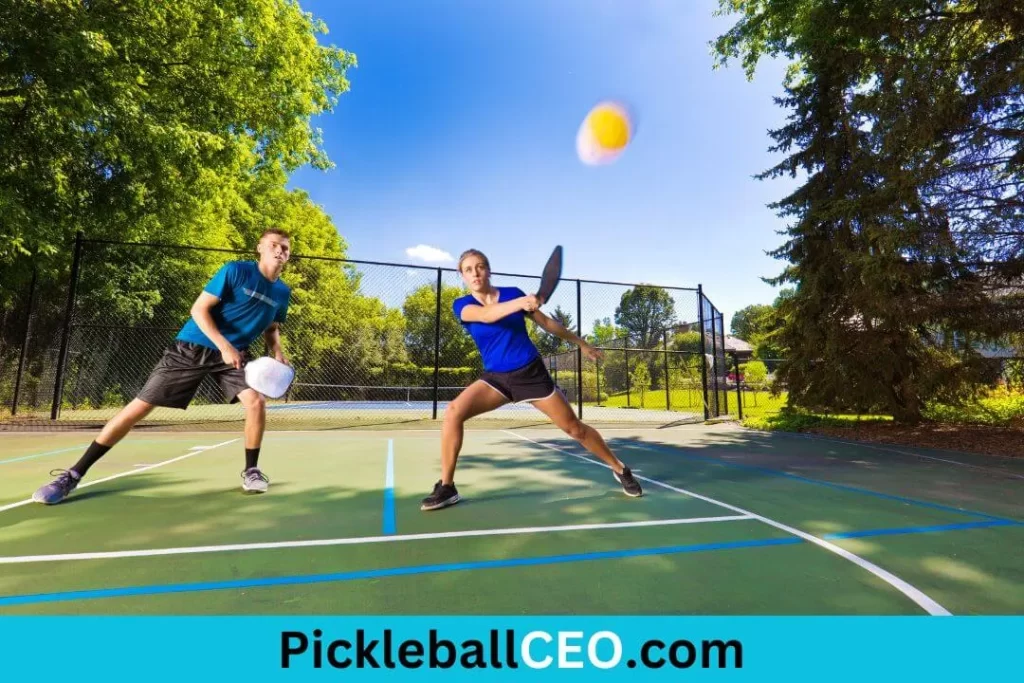

Efficient footwork is crucial for generating power and balance during the overhead smash. It involves moving quickly and purposefully to position yourself well and maximize your swing. By focusing on your footwork, you can improve your overall technique and increase the effectiveness of your overhead smash.
Positioning and Anticipation:
To execute a successful overhead smash, you need to position yourself correctly in relation to the ball. Anticipate where the ball will be and move swiftly to get into an optimal position. Position yourself slightly behind the ball to generate more power during your swing.
Split-Step:
The split-step is a fundamental footwork technique in pickleball that allows you to react quickly to your opponent’s shot. As you anticipate the incoming shot, perform a small hop or jump to land with your feet shoulder-width apart. This split-step helps you maintain balance and react swiftly to initiate your overhead smash.
Lateral Movement:
During the overhead smash, you may need to move laterally to position yourself correctly. Practice quick and agile lateral movements, such as shuffling or cross-steps, to adjust your position and get in line with the ball. Efficient lateral movement ensures that you can reach the ball comfortably and maintain balance throughout your swing.
Explosive Push-Off:
When preparing for the overhead smash, focus on an explosive push-off from the ground with your legs. This generates power and helps you transfer your body weight into the shot. The push-off should be quick and forceful, allowing you to generate more power and deliver an impactful overhead smash.
Pivot and Rotation:
As you approach the ball, utilize proper pivoting and rotation techniques to optimize your swing. Pivot on your back foot and rotate your hips and shoulders as you initiate the overhead swing. This rotation adds momentum and power to your shot, making it more effective and difficult for your opponent to return.
Recovery Steps:
After executing the overhead smash, quickly recover your position on the court. Take small, controlled steps to regain balance and prepare for the next shot. Efficient recovery footwork enables you to transition smoothly and be ready for any subsequent shots from your opponent.
By focusing on developing efficient footwork, you can enhance your overhead smash in pickleball. Practicing quick and agile movements, positioning yourself correctly, and utilizing proper pivoting and rotation techniques will help you generate more power, maintain balance, and execute successful overhead smashes with greater consistency.
4. Timing: Mastering the Art of Anticipation
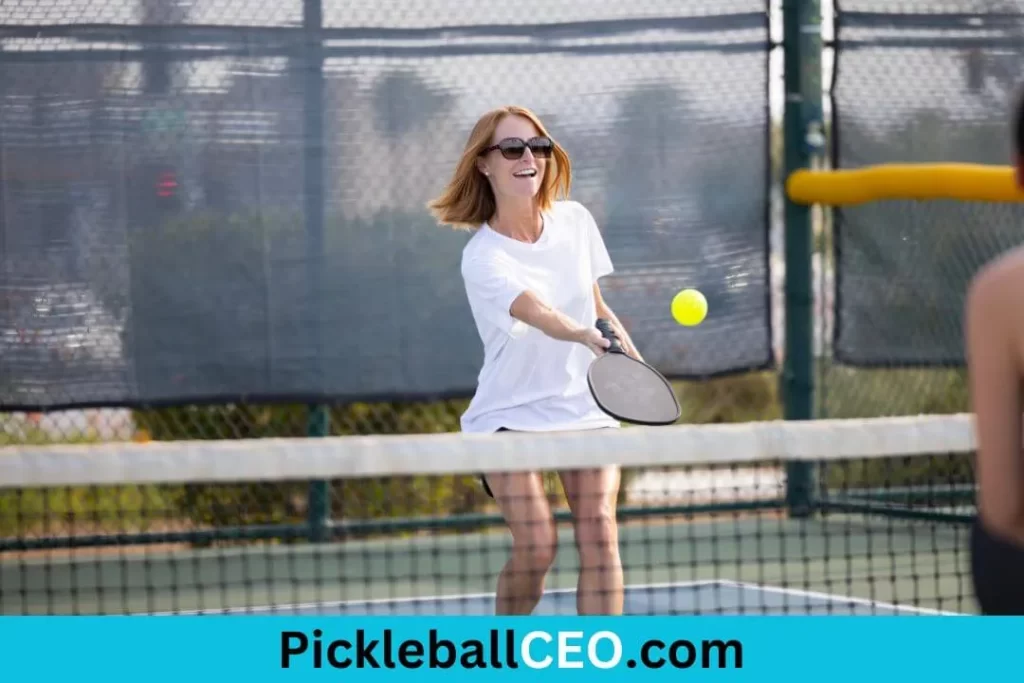

Timing plays a crucial role in executing a successful overhead smash in pickleball. Anticipating the ball’s trajectory and preparing to strike it at the optimal moment are key components of timing. By understanding and mastering the timing aspect, you can maximize your power, accuracy, and control when performing the overhead smash.
Analyze the Ball’s Trajectory
To improve your timing, start by analyzing the ball’s trajectory as it approaches your side of the court. Pay attention to the speed, height, and angle of the shot. By observing these factors, you can better anticipate when the ball will reach the ideal position for an overhead smash.
Positioning for Optimal Timing
Positioning yourself properly is crucial to achieve optimal timing. As the ball approaches, move quickly to position yourself slightly behind it. This allows you to time your swing effectively and strike the ball at its highest point, known as the peak of its bounce. By being in the right position, you’ll have more control over your shot and can generate maximum power.
Eye Focus on the Ball
Maintaining visual focus on the ball throughout its trajectory is essential for accurate timing. Keep your eyes locked on the ball, tracking its movement until it reaches the desired striking zone. By doing so, you’ll enhance your ability to gauge the optimal moment for the overhead smash.
Practice Timing Drills
Improving timing requires practice. Incorporate timing drills into your training sessions. Start with simple exercises where you toss the ball to yourself and practice striking it at the peak of its bounce. Gradually increase the difficulty by incorporating movement and simulating game-like situations. These drills will help you fine-tune your timing and develop muscle memory for executing the overhead smash effectively.
Mental Focus and Anticipation
Developing a keen sense of anticipation is essential for mastering timing. Train your mind to read the game and predict where the ball will go. By anticipating your opponent’s shots and having a proactive mindset, you can better prepare yourself to time your overhead smash correctly.
Video Analysis and Feedback
Recording your overhead smashes during practice or matches and analyzing them later can provide valuable insights. Review your technique and timing in slow motion, paying attention to the moment of contact with the ball. Look for any areas of improvement and make adjustments accordingly. Additionally, seek feedback from coaches or more experienced players who can offer guidance on refining your timing.
By focusing on timing and consistently practicing the overhead smash, you’ll develop a better understanding of the ball’s trajectory and improve your ability to strike it at the optimal moment. This mastery of timing will enhance the power, accuracy, and effectiveness of your overhead smash in pickleball.
5. Increase Strength
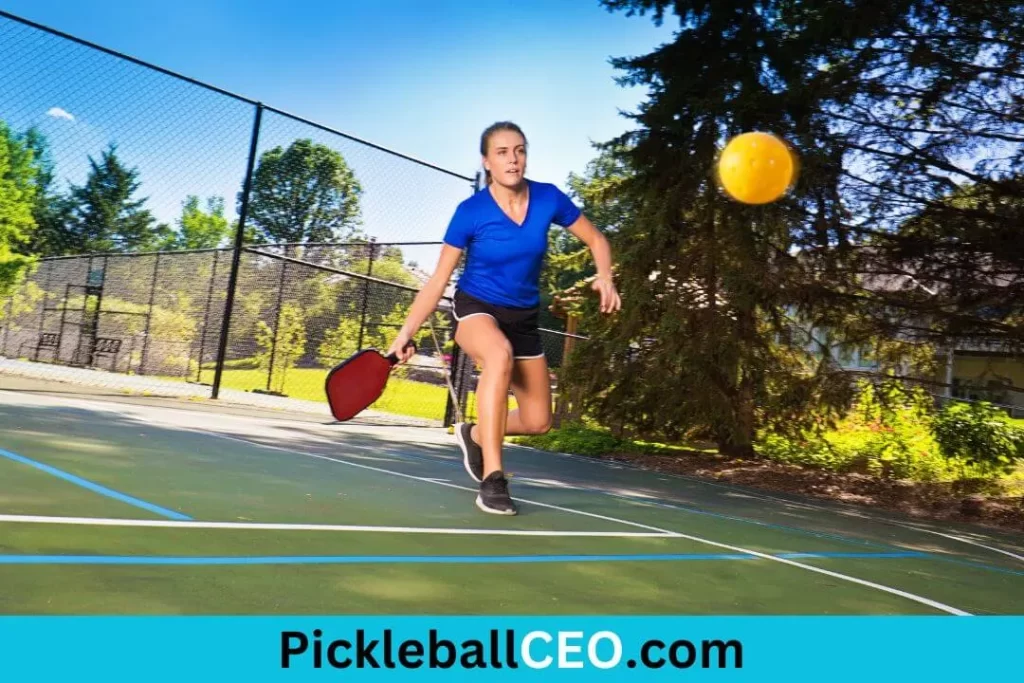

To generate more power during your overhead smash in pickleball, it’s essential to focus on strengthening your core, upper body, and arm muscles. Incorporating specific exercises into your fitness routine can help you build the necessary strength and explosiveness. Here are some effective ways to achieve this:
Weightlifting:
Include exercises that target the muscles used in the overhead smash. Focus on compound movements such as bench presses, shoulder presses, and lat pulldowns to strengthen your upper body. Additionally, exercises like squats and deadlifts can help improve overall body strength and stability.
Resistance Training:
Utilize resistance bands or cables to add resistance to your overhead smash training. These tools allow you to simulate the movement and build strength in a controlled manner. Perform exercises like resisted overhead presses and resisted lateral raises to target the relevant muscle groups.
Plyometrics:
Incorporate explosive plyometric exercises into your routine to develop power and quickness. Exercises like medicine ball slams, overhead medicine ball throws, and box jumps can enhance your explosive strength, translating to a more powerful overhead smash.
Remember to consult with a fitness professional or coach to ensure you’re using proper form and selecting exercises appropriate for your fitness level. Gradually increase the intensity and weight as you progress to avoid injury and maintain consistent improvement.
6. Practice Ball Toss
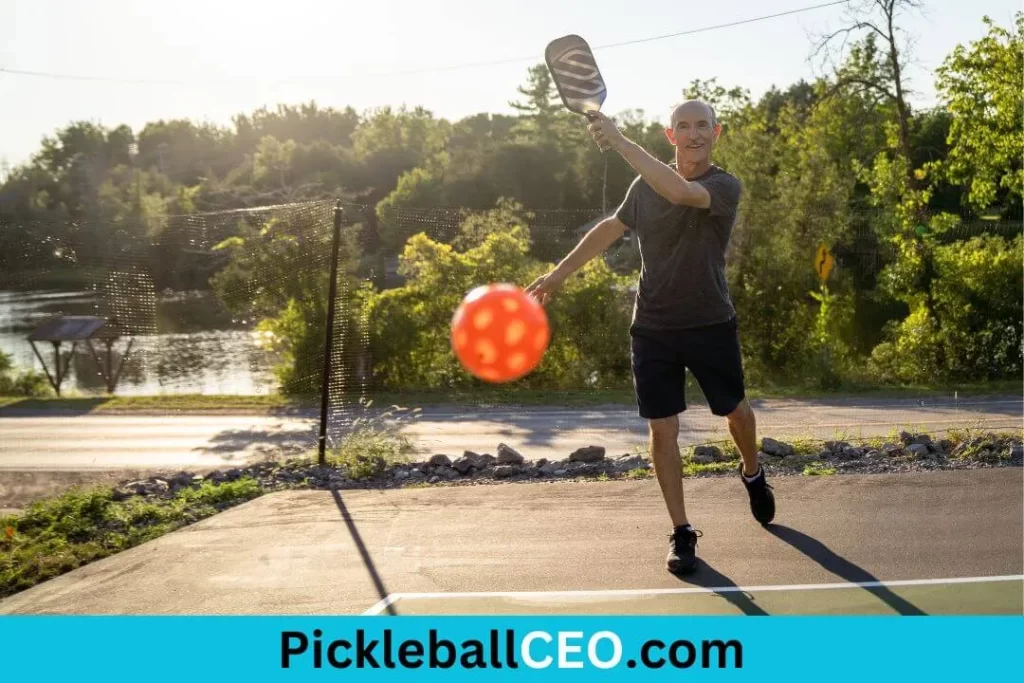

A consistent and accurate ball toss is crucial for a successful overhead smash. It sets the foundation for a well-executed shot and allows you to position yourself correctly and generate power. Here are some key points to focus on when practicing your ball toss:
Consistency
Consistency is key when it comes to the ball toss. Aim to replicate the height, distance, and location of your toss with each attempt. This consistency allows you to develop muscle memory and better predict the ball’s trajectory, enabling you to time your swing more effectively.
Preferred Striking Zone
Aligning the ball toss with your preferred striking zone is essential. The striking zone refers to the area in front of you where you can make solid contact with the ball at the ideal height and position. Experiment with different heights and distances to find the sweet spot that works best for your overhead smash.
Accuracy
Work on improving the accuracy of your ball toss. Practice aiming for a specific target or landing spot to enhance your control over the trajectory of the ball. This accuracy will enable you to consistently position yourself in the optimal position for a powerful overhead smash.
Height and Timing
The height and timing of the ball toss are critical factors. Toss the ball high enough to give yourself ample time to position yourself and execute the overhead smash effectively. Experiment with different heights to find the right balance between giving yourself enough time and not telegraphing your shot to your opponents.
Repetition and Focus
Dedicate focused practice time to improving your ball toss. Repetition is essential for developing muscle memory and consistency. Focus on the details of your toss, paying attention to the release point, speed, and trajectory. By honing your ball toss through deliberate practice, you’ll enhance your overall overhead smash performance.
Incorporate Drills
Incorporate specific drills into your training routine to improve your ball toss. For example, you can practice tossing the ball against a wall and hitting it at the desired height and location. Alternatively, you can work with a partner who feeds you consistent tosses, allowing you to focus solely on your overhead smash technique.
Remember, consistent practice is key to improving your ball toss. With time and effort, you’ll develop a reliable and accurate toss that sets the stage for powerful and precise overhead smashes in pickleball.
7. Aim for the Sweet Spot
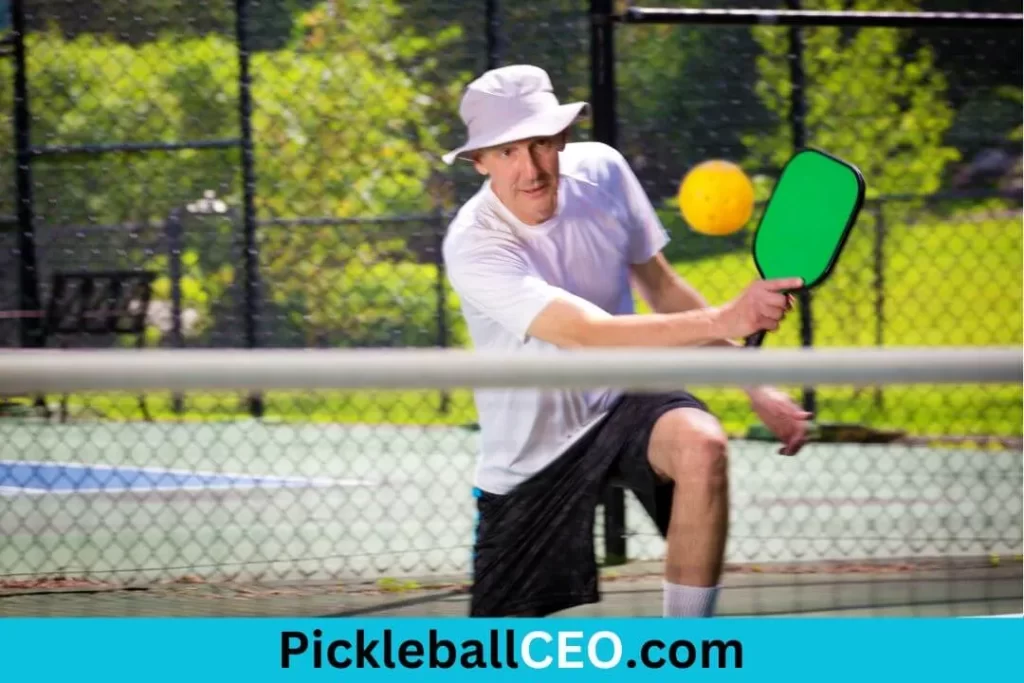

When executing an overhead smash in pickleball, it is crucial to aim for the sweet spot of your paddle. The sweet spot refers to the area on the paddle that allows for maximum power and control when striking the ball. By consistently hitting the sweet spot, you can optimize your shots and increase your chances of a successful smash.
Understanding the Sweet Spot
The sweet spot of a paddle is typically located near the center. It is the part of the paddle that delivers the most consistent response and provides the ideal combination of power and accuracy. When you make contact with the ball using the sweet spot, you can generate maximum power without sacrificing control over the shot.
Benefits of Hitting the Sweet Spot
Hitting the sweet spot offers several advantages when executing an overhead smash:
- Power: The sweet spot is designed to absorb and transfer maximum energy from your swing to the ball. As a result, striking the ball with the sweet spot enables you to generate more power, increasing the velocity of your shot.
- Control: The sweet spot provides a larger “sweet spot” of control, meaning it offers greater forgiveness for slight mishits. Even if your shot is slightly off-center, hitting close to the sweet spot minimizes the loss of control, allowing for better placement and accuracy.
- Consistency: Consistently aiming for the sweet spot helps you develop a repeatable and reliable technique. It enables you to build muscle memory and establish a consistent point of contact, leading to more consistent overhead smashes.
Tips for Hitting the Sweet Spot
To improve your ability to hit the sweet spot consistently during overhead smashes, consider the following tips:
- Grip: Ensure you have a firm and comfortable grip on the paddle. A proper grip allows for better control and facilitates finding the sweet spot consistently.
- Paddle Orientation: Position the paddle correctly, ensuring that the face is perpendicular to the ball’s trajectory. This alignment increases the chances of hitting the sweet spot.
- Practice Precision: Dedicate practice time to hitting specific targets on the paddle, focusing on the sweet spot. This helps train your muscle memory and improves your ability to locate the sweet spot during a game.
- Slightly Tilted Strike: Experiment with a slightly tilted strike by angling the paddle face slightly downward. This technique can help you make solid contact with the sweet spot and generate more power.
- Video Analysis: Record your overhead smashes and review the footage to identify your contact point. Pay attention to whether you consistently hit the sweet spot or if there are any patterns of mishits. Adjust your technique accordingly based on the analysis.
By aiming for the sweet spot and incorporating these tips into your practice routine, you can enhance the power, control, and consistency of your overhead smash in pickleball.
8. Visual Focus: Keeping Your Eyes on the Ball
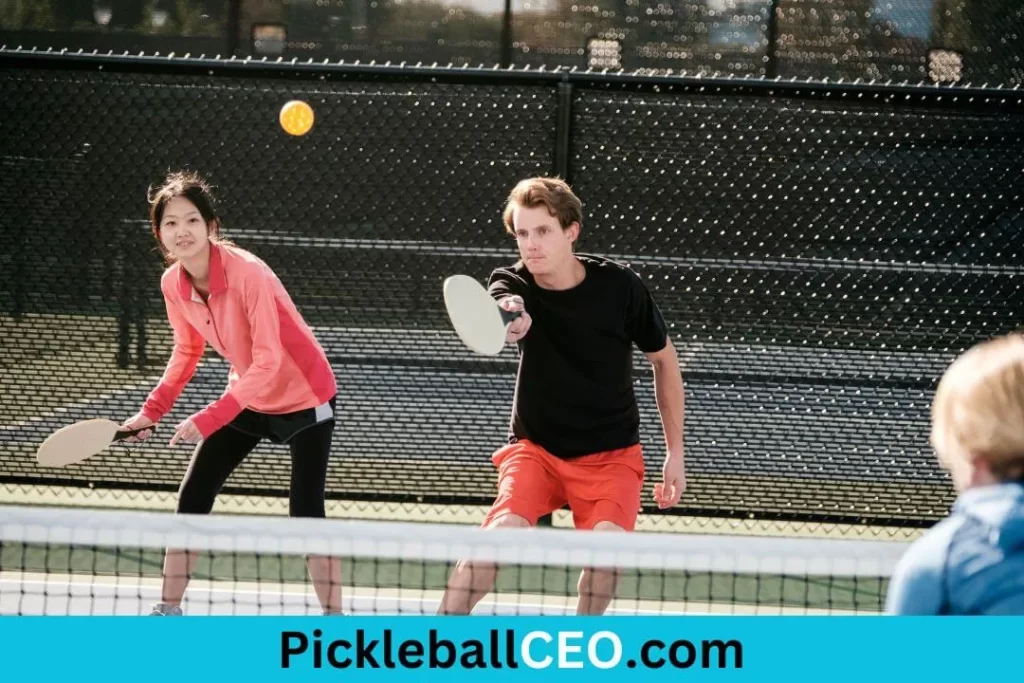

Maintaining proper visual focus is a fundamental aspect of executing a successful overhead smash in pickleball. Here’s why it’s crucial and how you can improve it:
Importance of Visual Focus:
- Timing: By keeping your eyes on the ball, you can accurately gauge its speed, trajectory, and timing. This allows you to position yourself correctly and prepare for the overhead smash at the optimal moment.
- Accuracy: Visual focus helps you make precise contact with the ball, increasing the chances of hitting the sweet spot of your paddle. This results in better control and power in your shots.
- Decision-making: By tracking the ball visually, you can quickly assess whether it’s within your strike zone or if adjustments need to be made. This allows you to make split-second decisions on whether to execute an overhead smash or opt for a different shot.
Tips to Improve Visual Focus:
- Concentration: Prioritize maintaining focus solely on the ball during its entire trajectory. Eliminate distractions and concentrate solely on the task at hand.
- Tracking: Train your eyes to track the ball from the moment it leaves your opponent’s paddle until it reaches the desired striking zone. Practice this skill repeatedly to develop better hand-eye coordination.
- Anticipation: Anticipate the ball’s movement by observing your opponent’s shot and predicting its trajectory. This proactive approach helps you stay prepared and react quickly.
- Peripheral Awareness: While it’s essential to focus on the ball, maintain peripheral awareness of your surroundings, including your opponent’s position and court positioning. This enables you to plan your shot strategically.
Practice Drills for Visual Focus:
- Eye Tracking: Perform eye-tracking exercises by having a partner toss a ball or use a ball machine to simulate various shots. Focus on following the ball’s path with your eyes until it reaches the striking zone.
- Reaction Training: Incorporate reaction-based drills where you respond to visual cues, such as your partner’s paddle movement or a ball’s bounce, by quickly executing an overhead smash. This improves your ability to react swiftly and accurately.
- Match Simulations: During practice matches, consciously remind yourself to maintain visual focus on the ball. Make it a habit to track the ball consistently, even during fast-paced exchanges.
By emphasizing visual focus and implementing targeted drills, you can improve your ability to track the ball, make precise contact, and execute successful overhead smashes in pickleball. With consistent practice, your visual skills will enhance, leading to better timing, accuracy, and decision-making on the court.
9. Control Your Follow-through
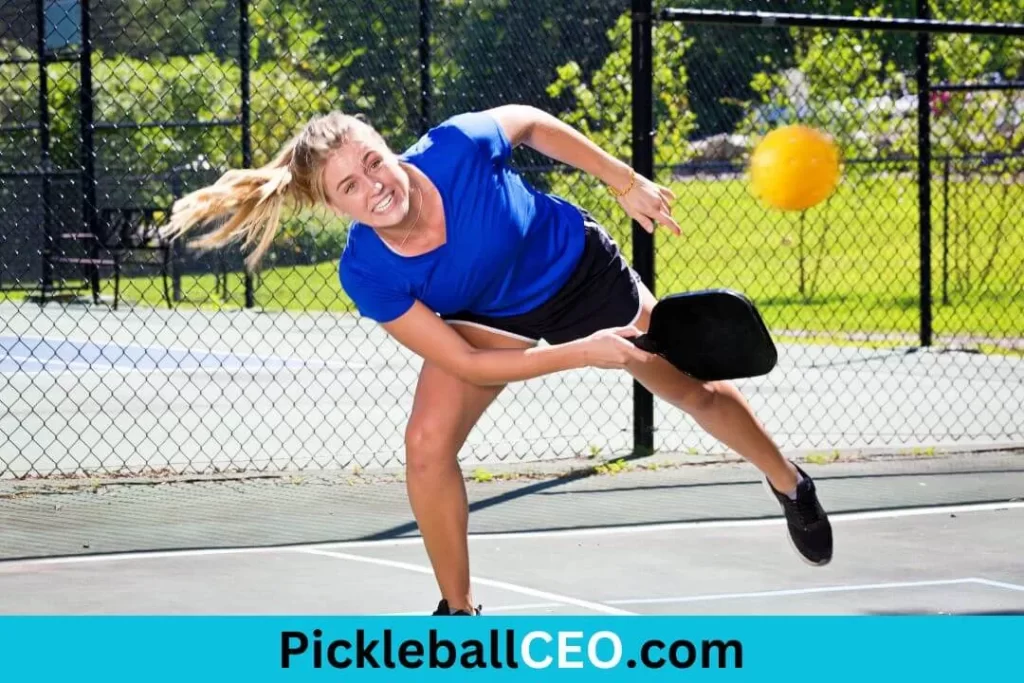

Controlling your follow-through is essential for maintaining balance and setting up for your next shot after making contact with the ball. Here are some key points to focus on:
Maintain Balance
As you swing the paddle and make contact with the ball, it’s crucial to maintain your balance. Avoid overextending or leaning too far in any direction. Keep your body centered and stable throughout the swing.
Extend Upward
After striking the ball, continue extending your arm and paddle upward. This upward extension helps generate power and control in your shot. Aim to fully extend your arm and follow through with a high finish.
Paddle High and Pointing Towards the Target
As you complete your follow-through, ensure that your paddle is held high and pointing towards your intended target area on the other side of the court. This helps maintain control and accuracy in your shot, as well as prepares you for the subsequent shots.
Follow-through with the Body
In addition to extending your arm and paddle, let your body naturally follow through with the shot. Rotate your torso and shoulders in the direction of your target, allowing for a smooth and coordinated motion. This follow-through with the body adds power and consistency to your overhead smash.
Maintain Fluidity
Avoid abruptly stopping your follow-through. Instead, aim for a smooth and fluid motion from the start of your swing to the completion of your follow-through. This fluidity helps with the transfer of energy and allows for better shot control.
Ready Position for the Next Shot
After completing your overhead smash, quickly return to a ready position to prepare for the next shot. This involves resetting your feet, regaining balance, and being ready to react to the opponent’s return.
By focusing on these aspects and practicing your follow-through, you can improve your balance, maintain control over your shot, and set yourself up for a strong position for your next move on the pickleball court.
10. Practice Smashing Drills
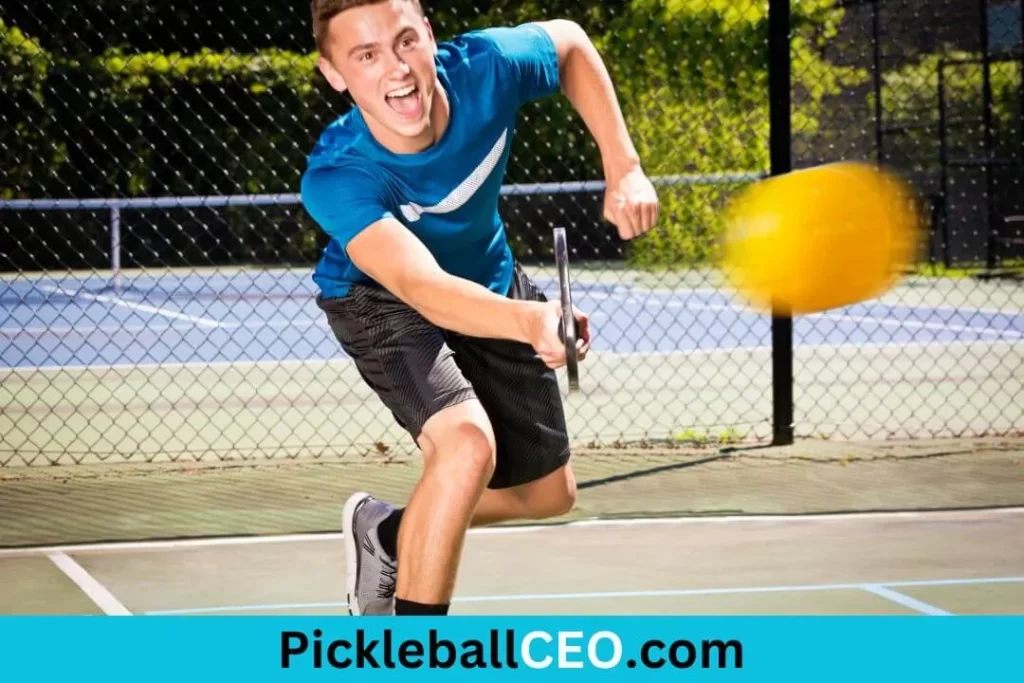

Incorporating specific smashing drills into your practice sessions can be highly beneficial for improving your overhead smash in pickleball. These drills help enhance your reflexes, technique, and overall performance on the court. Here are some effective smashing drills to consider:
Wall Practice
Practicing against a wall is an excellent way to work on your overhead smash technique. Stand a few feet away from a wall and hit the ball against it, focusing on generating power and accuracy. This drill helps you develop a consistent swing and improve your timing as you react to the ball’s rebound off the wall.
Partner Practice
Partner drills allow you to simulate game-like situations and work on your smashing skills in a dynamic setting. Here are a couple of partner drills to try:
- Feed and Smash: Have a partner feed you high lobs, allowing you to practice your overhead smash. Focus on positioning yourself correctly, timing your swing, and executing a powerful shot.
- Smash and React: Stand at the net while your partner hits the ball to you from the baseline. Practice smashing the ball back, and then be prepared to react quickly to your partner’s next shot. This drill helps improve your agility, reflexes, and shot anticipation.
Game-Like Situations
Incorporating smashing drills into game-like situations helps you practice your overhead smash under pressure. Consider the following drills:
- Doubles Game Practice: Play doubles games with friends or teammates, focusing specifically on using your overhead smash as an offensive weapon. Look for opportunities to set up and execute powerful smashes during rallies.
- Smash and Recovery: Hit a high lob to your opponent, allowing them to return the ball. Practice recovering quickly after your smash and being prepared for the next shot, whether it requires a defensive move or another offensive opportunity.
By incorporating these smashing drills into your practice routine, you can refine your technique, develop better reflexes, and become more comfortable executing overhead smashes in various situations. Regularly challenging yourself with these drills will contribute to overall improvement in your game.
Final Thoughts
Improving your overhead smash in pickleball requires a focus on developing proper technique, positioning, footwork, timing, increasing strength, practicing ball toss, aiming for the sweet spot, maintaining visual focus, and concentration. By paying attention to these key aspects and consistently practicing, you can enhance your execution, power, accuracy, and control of the overhead smash. Remember to integrate these elements into your training routine and strive for continuous improvement to elevate your performance on the court.







Comments (4)
3 Ways to Increase the Speed of Your Pickleball Serve - Pickleball CEOsays:
June 30, 2023 at 1:20 pm[…] the right technique is paramount when it comes to generating speed in your pickleball serve. By focusing on the […]
30 to 40% Faster with This Pickleball Trick - Pickleball CEOsays:
July 19, 2023 at 11:33 am[…] trick that can give you a significant advantage on the court. Let’s delve deeper into this technique and understand how it can elevate your […]
5 of the Best Pickleball Drills to Improve Your Game - Pickleball CEOsays:
July 23, 2023 at 4:13 am[…] proper form and technique while executing the overhead smash, focusing on a controlled and powerful […]
5 Essential Pickleball Skill Drills - Pickleball CEOsays:
August 8, 2023 at 12:07 pm[…] Once your partner returns with a lob, react quickly and move into position for an overhead smash. […]